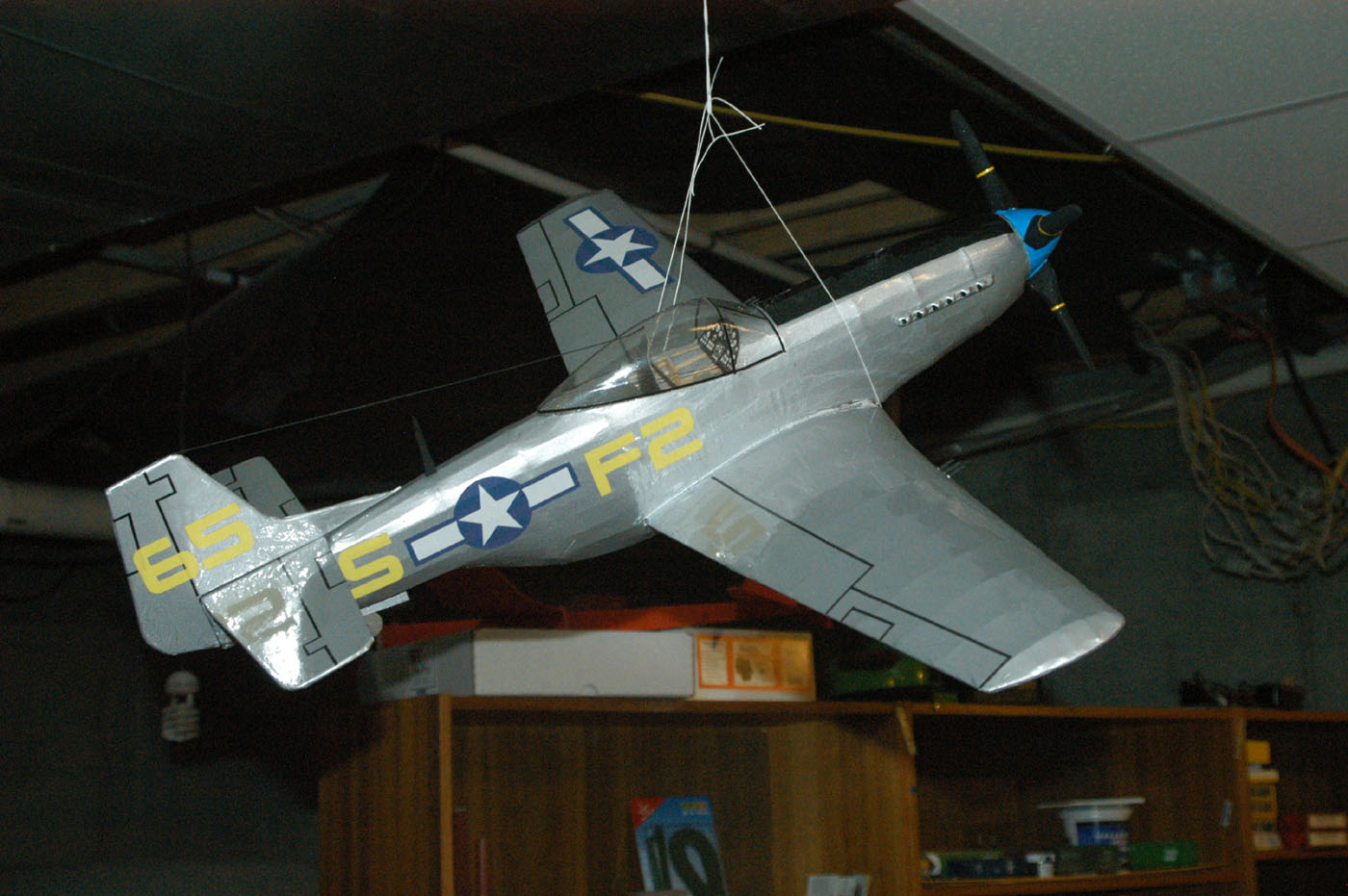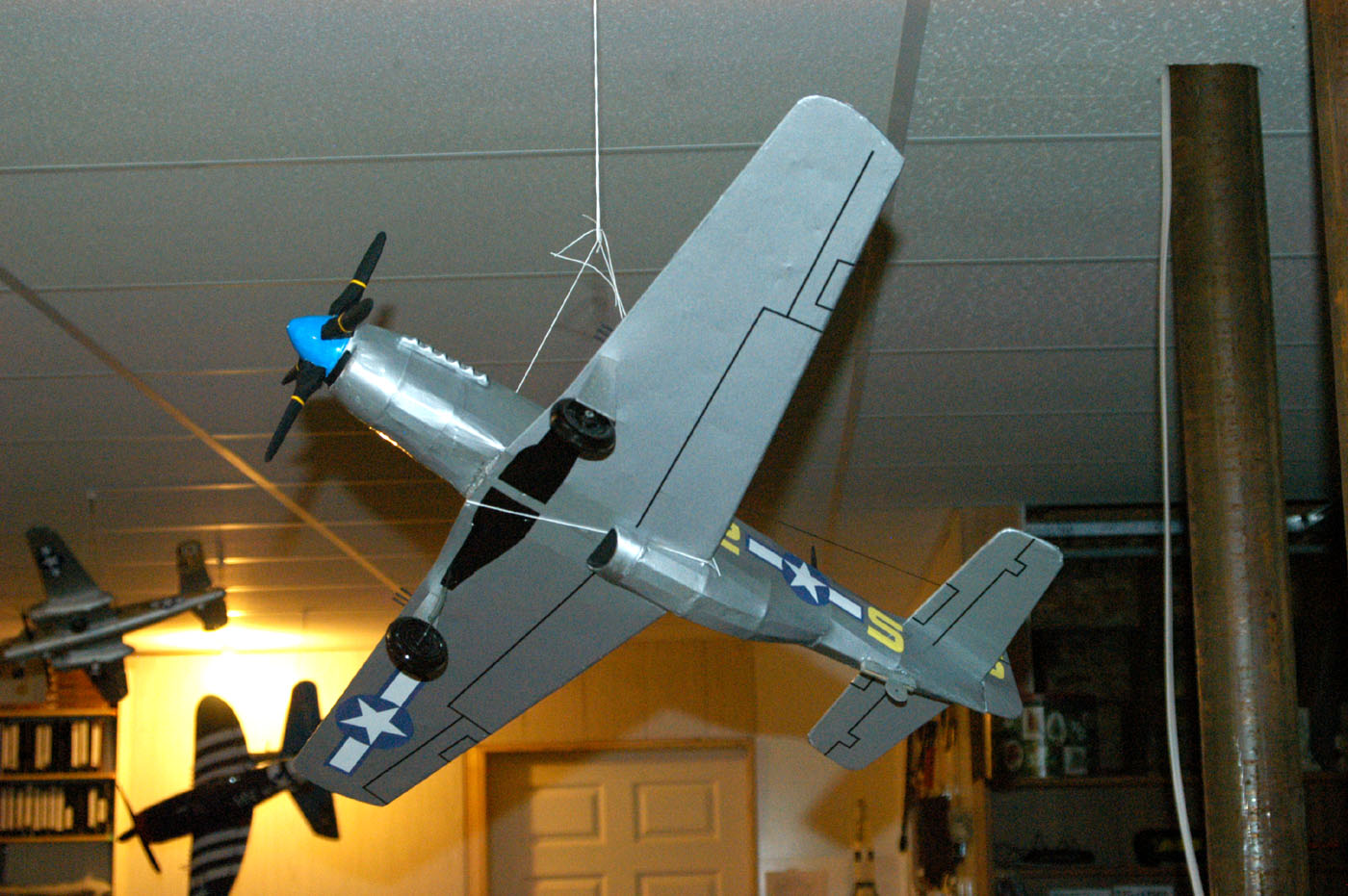P-51 Mustang
One of the most effective, famous and beautiful fighter aircraft of WWII, the P-51 was designed to fulfill a British requirement dated April 1940. The NA-73X prototype was produced in record time, but did not fly until 26 October 1940. The first RAF production models, designated Mustang Mk Is, underwent rigorous testing and evaluation, and it was found that the 1,100-hp Allison engine was well suited for low-altitude tactical reconnaissance, but the engine's power decreased dramatically above an altitude of 12,000 feet, making it a poor choice for air-to-air combat or interception roles. Because of this, the RAF left its eight machine guns intact, but also fitted the Mustang with cameras. In this configuration, it served in at least 23 RAF squadrons, beginning in April 1942. At the same time, the US Army Air Corps ordered a small number for tactical reconnaissance evaluation as the F-6A. After the RAF found the aircraft's performance lacking, they tested a new engine, the 12-cylinder Rolls-Royce Merlin. This gave much-improved performance, and led to the USAAF fitting two airframes with 1,430-hp Packard-built Merlin V-1650 engines. These aircraft were re-designated XP-51B. Practically overnight, the aircraft's potential began to grow.
The first Merlin-engine versions appeared in 1943 with the P-51B, of which 1,988 were built in Inglewood, California, and the P-51C, of which 1,750 were built in Dallas, Texas. Both new versions had strengthened fuselages and four wing-mounted 12.7-mm machine guns. Many of these new Mustangs were delivered to the UK as Mustang Mk IIIs, and others went to the USAAF as F-6Cs. The Merlin-powered Mustangs were exactly what the Allied bombers in Europe desperately needed, and they became famous for their long range and potent high-altitude escort capability. The most significant variant, the P-51D, featured a 360-degree-view bubble canopy, a modified rear fuselage, and six 12.77-mm machine guns. 7,956 were built, and once again, many went to the UK as Mustang Mk IVs and others became USAAF F-6D reconnaissance aircraft. Next came the P-51K, which was generally similar. A third of these became RAF Mustang IVs also, and over a hundred became F-6Ks. Very late in the war, the P-51H appeared, although only 555 of 2000 were completed before V-J Day caused the cancellation of the order. US production totaled 15,386, but at least 200 more were built by the Commonwealth Aircraft Corporation of Australia with imported parts and designated Mustang Mk 20/21/22/23. None of these saw service before the end of the war. Under the Lend-Lease program, 50 P-51s were supplied to China, and 40 more were supplied to the Netherlands in the Pacific theater.
Specifications (P-51D): Performance:
Engine: One 1,695-hp Packard Merlin V-1650-7 piston V-12 engine Maximum Speed: 437 mph
Weight: Empty 7,125 lbs., Max Takeoff 12,100 lbs. Ceiling: 41,900 ft.
Wing Span: 37ft. 0.5in. Range: 1300 miles
Length: 32ft. 9.5in.
Height: 13ft. 8in.
Armament: Six 12.7-mm (0.5 inch) wing-mounted machine guns, plus up to two 1,000-lb bombs or six 127-mm (5 inch) rockets.
 |
 |